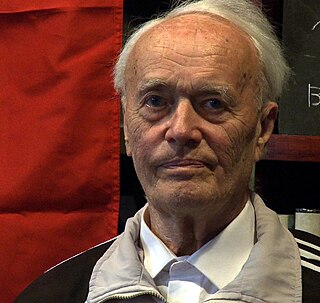 W
WNacht und Nebel, meaning Night and Fog, was a directive issued by Adolf Hitler on 7 December 1941 targeting political activists and resistance "helpers" in World War II, who were to be imprisoned, killed, or made to disappear, while the family and the population remained uncertain as to the fate or whereabouts of the Nazi state's alleged offender. Victims who disappeared in these clandestine actions were never heard from again.
 W
WVirginia d'Albert-Lake was a member of the anti-Nazi French Resistance during World War II. She worked with the Comet Escape Line. She and her husband Philippe helped 67 British and American airmen evade German capture. She was arrested on June 12, 1944 and imprisoned by the Germans in Ravensbrück concentration camp and other camps for the remainder of the war.
 W
WHenriette Bie Lorentzen, born Anna Henriette Wegner Haagaas, was a Norwegian journalist, humanist, peace activist, feminist, co-founder of the Nansen Academy, resistance member and concentration camp survivor during World War II, and publisher and editor-in-chief of the women's magazine Kvinnen og Tiden (1945–1955).
 W
WTrygve Martin Bratteli (help·info) was a Norwegian newspaper editor and politician with the Norwegian Labour Party. He served as prime minister of Norway from 1971 to 1972 and again from 1973 to 1976. He was president of the Nordic Council in 1978.
 W
WLudvik Buland was a Norwegian trade unionist. He chaired the Norwegian Union of Railway Workers, but was imprisoned and died during the occupation of Norway by Nazi Germany.
 W
WAndrée Eugénie Adrienne de Jongh, called Dédée and Postman, was a member of the Belgian Resistance during the Second World War. She organised and led the Comet Line to assist Allied soldiers and airmen to escape from Nazi-occupied Belgium. The airmen were survivors of military airplanes shot down over Belgium or other European countries. Between August 1941 and December 1942, she escorted 118 people, including more than 80 airmen, from Belgium to neutral Spain from where they were transported to the United Kingdom. Arrested by the Nazis in January 1943, she was incarcerated for the remainder of World War II. After the war, she worked in leper hospitals in Africa.
 W
WReinhard Tristan Eugen Heydrich was a high-ranking German SS and police official during the Nazi era and a principal architect of the Holocaust. He was chief of the Reich Security Main Office. He was also Stellvertretender Reichsprotektor of Bohemia and Moravia. He served as president of the International Criminal Police Commission and chaired the January 1942 Wannsee Conference which formalised plans for the "Final Solution to the Jewish Question"—the deportation and genocide of all Jews in German-occupied Europe.
 W
WNoor-un-Nisa Inayat Khan, GC, also known as Nora Inayat-Khan and Nora Baker, was a British spy in World War II who served in the Special Operations Executive (SOE).
 W
WMorio Kita was the pen name of Sokichi Saitō , a Japanese psychiatrist, novelist and essayist.
 W
WElsie Maréchal was an English woman who became active in the Belgian Resistance during World War II. As a member of the Comet Line, she helped downed Allied airmen evade capture by German forces. After being betrayed in November 1942, she was sentenced to death and subjected to the 'Nacht und Nebel' policy designed to make such opponents of the Nazis 'disappear' in prison camps. She survived to tell her story to her family back in England and to receive awards for her work. Her teen age children, Elsie and Robert, also survived prison, but her husband Georges was executed.
 W
WNight and Fog is a 1955 French documentary short film. Directed by Alain Resnais, it was made ten years after the liberation of Nazi concentration camps. The title is taken from the Nacht und Nebel program of abductions and disappearances decreed by Nazi Germany. The documentary features the abandoned grounds of Auschwitz and Majdanek established in occupied Poland while describing the lives of prisoners in the camps. Night and Fog was made in collaboration with scriptwriter Jean Cayrol, a survivor of the Mauthausen-Gusen concentration camp. The music of the soundtrack was composed by Hanns Eisler.
 W
WHaakon Sørbye was a Norwegian engineer and resistance member during World War II. He was a member of the radio group Skylark B during the war. After the war he was a professor at the Norwegian Institute of Technology.
 W
W